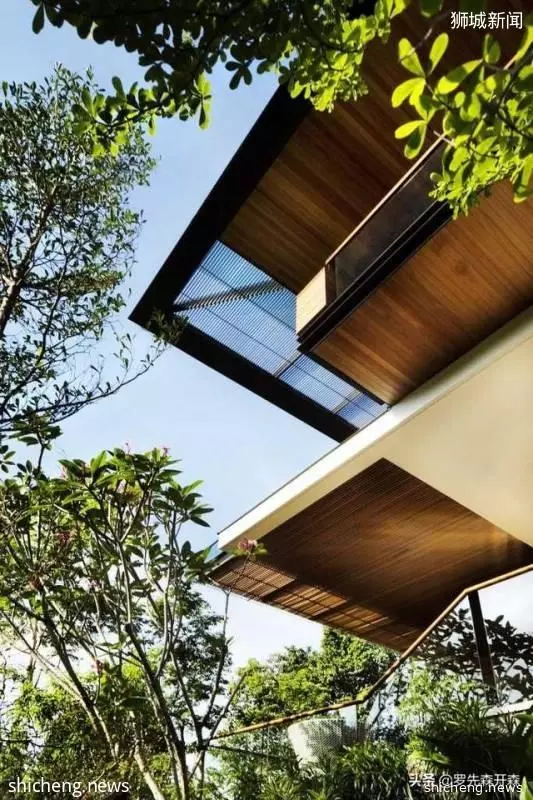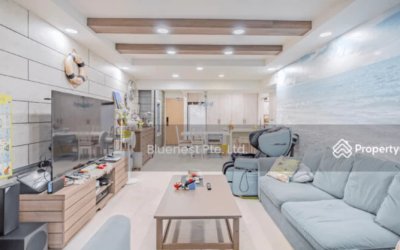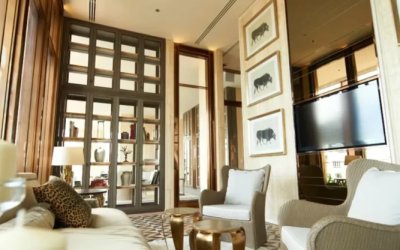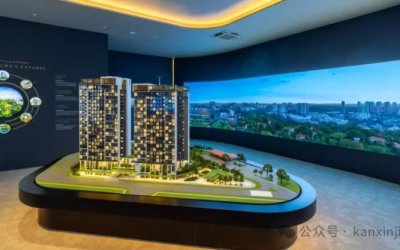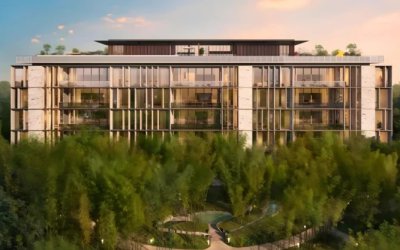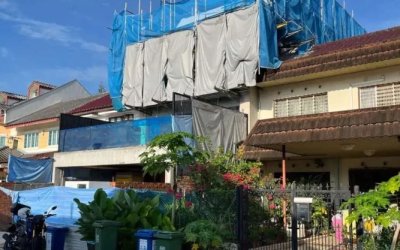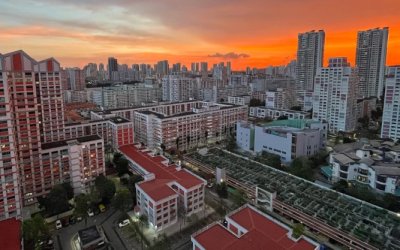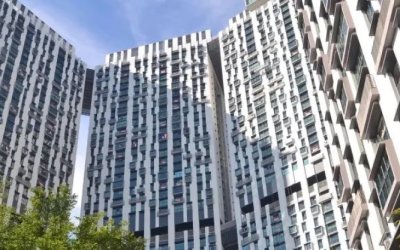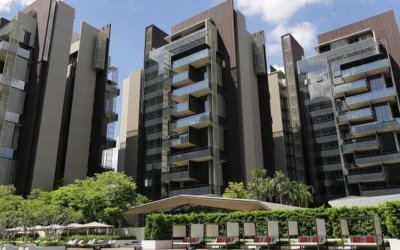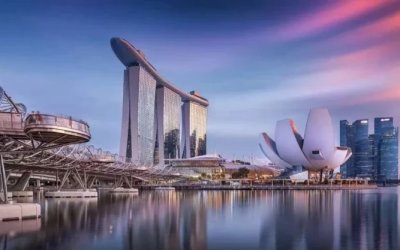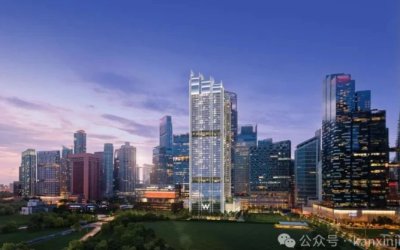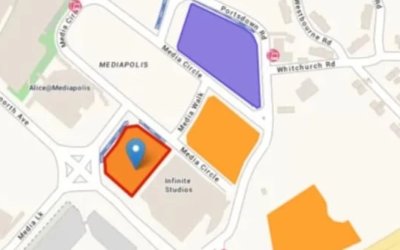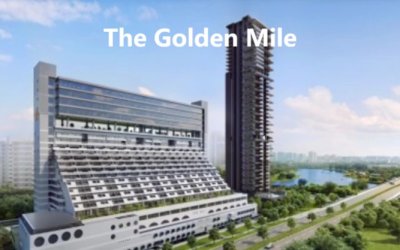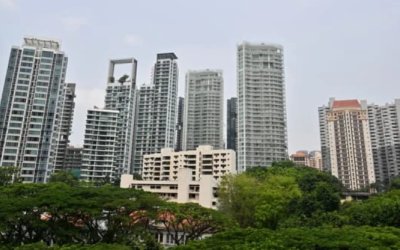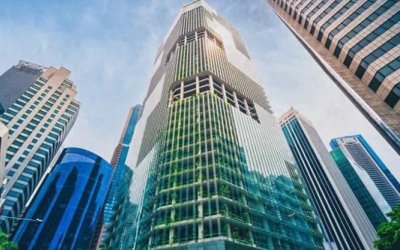客戶的願景是建造一個可充分利用場地陡坡,俯瞰壯觀的植物園世界遺產,同時又充滿活力的住宅。但客戶的願景在很大程度上是一個有機的過程,在建設過程中,隨著設計的深入,建築房間自然而然也會增加,所以很難保證一次性的連貫設計,不斷地對空間和整體體量進行合理化是設計應有的一個持續過程。
Guz Architects:The client requested an exciting dynamic house that made the most of the spectacular steeply sloping site which overlooked the world heritage site of the botanic gardens. The clients brief was very much an organic process, in the making, with rooms being added as the design developed. This made it hard to maintain a coherent design, so constant rationalisation of the spaces and the overall massing was a continual process.
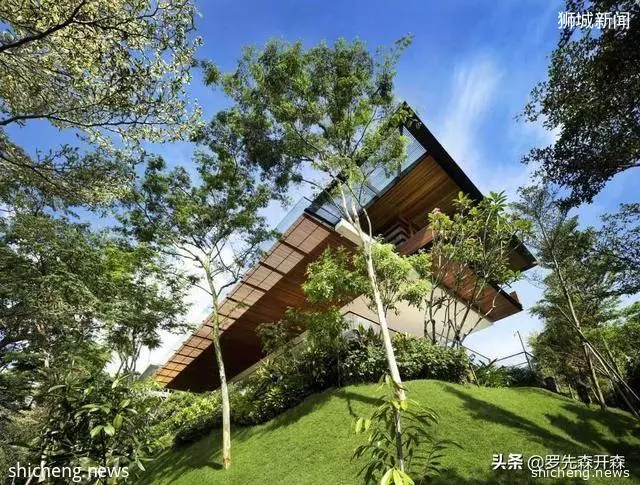
風水在此次設計中也扮演了重要的角色,比如住宅圓形電梯和前門的設計角度。
Feng Shui also played a major role in determining elements of the design, such as the round lift and angling of the front door.
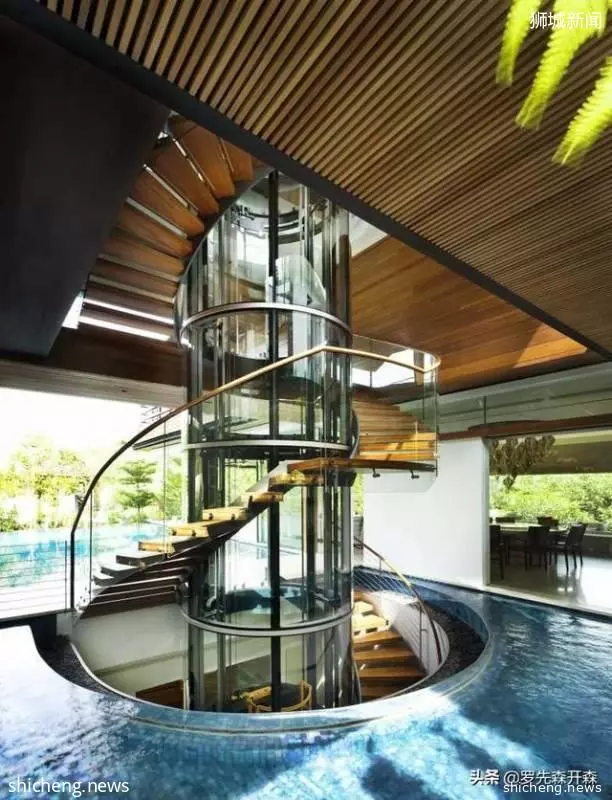
項目基地位於繁忙的克魯尼路,正對著植物園的入口。場地從道路開始陡峭地向上傾斜直到高出道路數米,因此,車輛進入場地非常困難,這也是設計的一個主要決定因素,為了儘量減少一樓平台層和道路層之間的高差,我們決定從地下室進入,並創建一個光線充足、通風良好的地下室入口,為加強與自然的聯繫,庭院四周布置了景觀水池和瀑布,即使採用這種設計策略,也不能改變車道依然會蜿蜒陡峭的事實。
The site sits on the busy Cluny Road facing the entrance to the botanic gardens. From the road, the site sloped up steeply to a platform level many metres above road level. Vehicular access to the site was therefore difficult and was a major determinant on the design. To minimise the discrepancy between the 1/F platform level and the road level it was decided to enter at basement level and to create a light airy basement entry a courtyard was sunk down with a landscaped pond and waterfall to introduce the connection with nature. Even adopting this strategy meant the driveway had to be sinuous and steep.
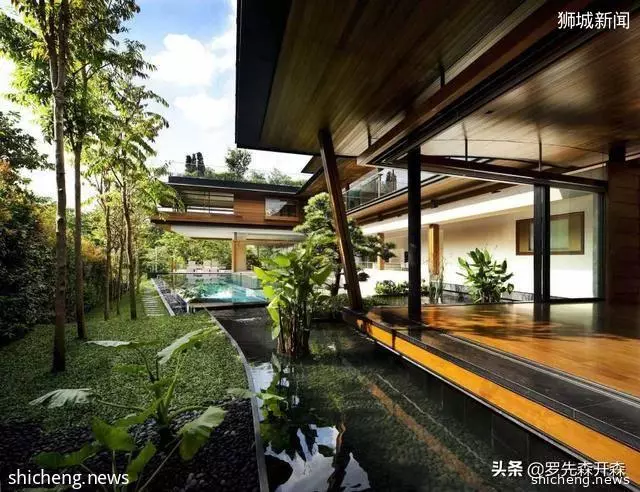
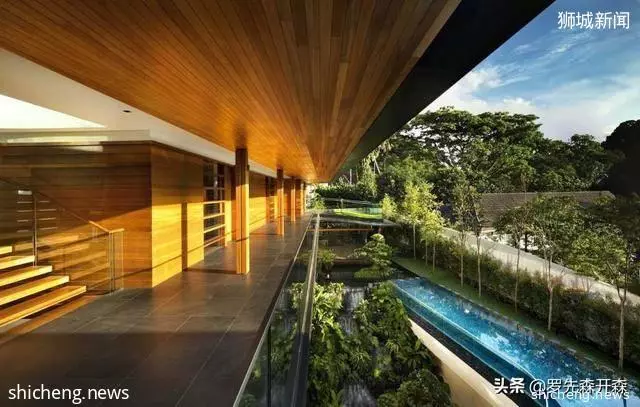

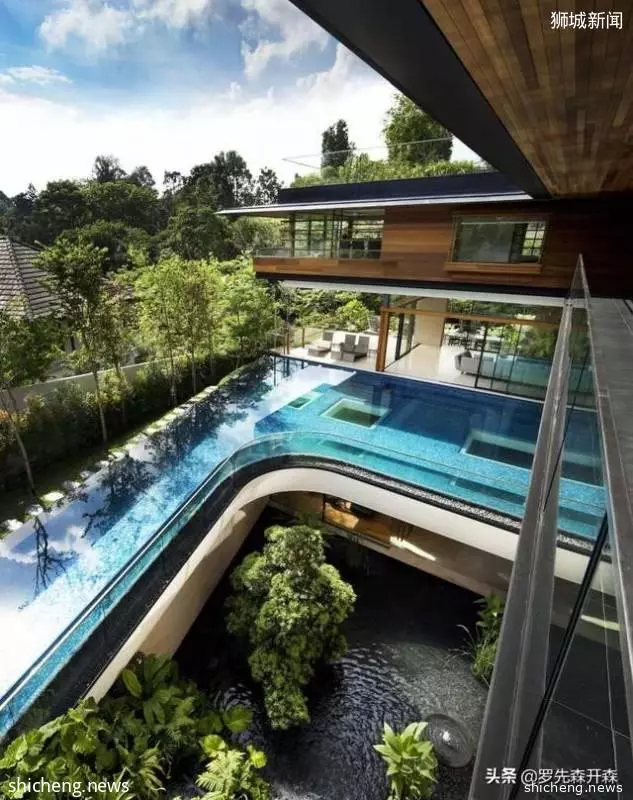
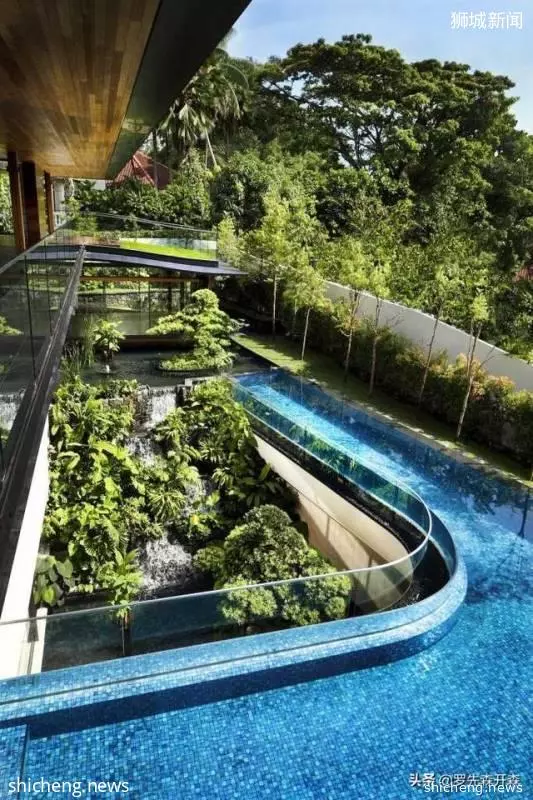
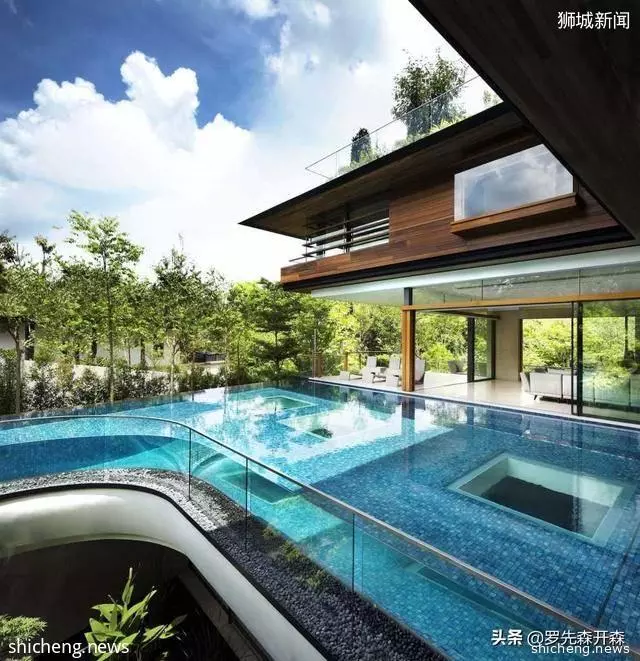
由於場地具備明顯的凸起性質和突出可俯瞰道路的建築物位置,我們決定使用由輕薄元素組成的大懸樑「漂浮」,使建築看起來更輕盈,以減輕從道路上看到的建築的外觀質量。
Because of the prominent raised nature of the site and the prominent placing of the building overlooking the road we decided to make the building appear light and to 『float』 with large cantilevers of thin elements to reduce the apparent mass of the building seen from the road.
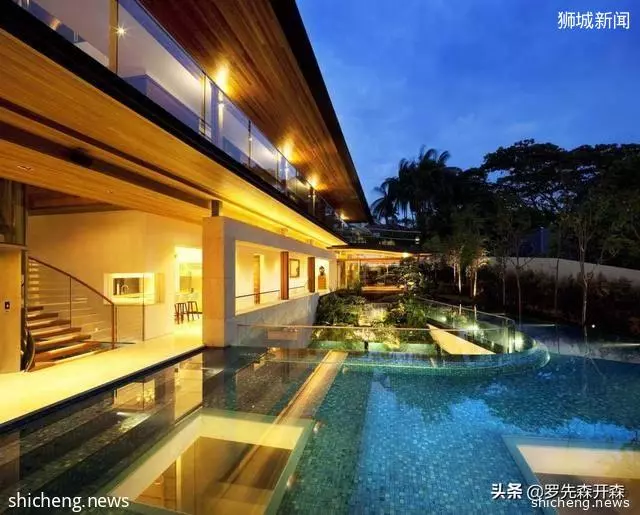
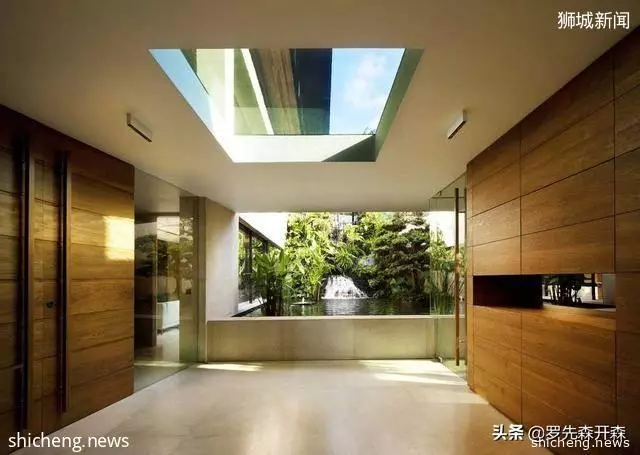
建築下層採用鋼筋混凝土結構,上層採用鋼筋混凝土與鋼的組合,來構建大懸樑,閣樓的地板則完全是鋼結構,鋁屋頂也設置了大量的光伏電池。
For the lower floors RC construction was adopted, but for the upper floors and combination of RC and steel was used to achieve the large cantilevers. the attic floor was entirely steel structure with an aluminium roof that also supports a large array of photovoltaic cells.
